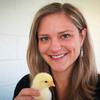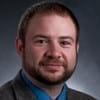Explore all the information on
Poultry welfare
Proper animal welfare involves providing the proper housing, management, nutrition, disease prevention and treatment, responsible care, humane handling and, when necessary, humane euthanasia. These factors allow for the most optimal and humane growing environment. The concept of animal welfare includes three elements: the bird’s normal biological functioning, its emotional state and its ability to express its natural behaviors. Improving animal welfare can be accomplished through offerings like poultry feed enrichment, which can reduce stress, thereby increasing performance, productivity and profitability. Animal welfare is currently a major requirement for intensive poultry production. Beak trimming, stocking density, free access to feed, heat stress, and air pollutants became important issues, which are regulated in several countries. Animal welfare is observed by watching how birds naturally behave and even by looking at mortality stemming from aggressive behaviors.
INTRODUCTION Broilers and turkeys are traditionally kept under monotonous environmental conditions, which compromise bird welfare due to inactivity, restriction of the behavioural repertoire and various health hazards. Recent development of welfare labels request enrichment devices in order to stimulate the expression of a wide spectrum of behaviours and to improve the physical and psychic conditions of the birds. Consequently there has been a rapid development of studies...
Comments : 0
Recommendations: 0
In 2020, the poultry industry had a combined value of over $35.5 billion in the United States. Of that, $21.7 billion came from broiler chicken production (USDA-NASS, 2021). Over 9.22 billion broiler chickens were raised and brought to market though the year, making it the largest and most valuable sector of U.S. poultry production. With such...
Comments : 0
Recommendations: 0
Sickness behavior is an animal’s adaptive response to disease which aids in their recovery. When an animal is infected by a pathogen, an immune response involving immune cell and immune molecule activity is stimulated and sickness behavior results. Sick chickens are difficult to identify because they rarely show signs of illness before it...
Comments : 0
Recommendations: 1
The Poultry Extension Collaborative (PEC) brings you the webinar "Bugs, Biome and Breeding: Improving Laying Hen Welfare" on May 17th, from 9 to 12 am EST, via Zoom.
Attendance is free and you can register ...
Comments : 0
Recommendations: 0
.jpg&w=3840&q=75)

Driving Sustainability in Animal Nutrition: Evonik’s Bold Approach
Suggested link
In most regions, summer is around the corner and poultry farmers need to prepare the birds to combat the heat and hence stay productive. Adding a powerful yeast postbiotic can help broilers absorb nutrients more readily and keep cool. When the chicken is healthy and performing at its best, the bird is in a state of physiological equilibrium (homeostasis). When the animal is exposed to stressors, coming from external sources (such as heat stress) or internal sources (such as metabolic...
Comments : 0
Recommendations: 2
Introduction Most of the population in the tropics depend on poultry as their significant source of protein supply. The harsh climate conditions in this region are making it harder to have optimal performance in poultry production. This results in a lesser everyday supply of...
Comments : 0
Recommendations: 1
Flies population increasing largely inside the broiler house and making birds uncomfortable. Is there any solution without harming birds health? ...
Comments : 1
Recommendations: 0
Bird performs well within a certain range of environmental temperatures. As the temperature gets higher than the range, the bird falls on stress generally called heat stress. Heat stress is the most significant stressors influencing poultry productivity and causing considerable economic losses in the poultry industry. This induces several negative effects on physiological response of bird. Reducing feed consumption, body weight gain, feed efficiency, egg production and immune response are of...
Comments : 1
Recommendations: 7
INTRODUCTION Although rearing the meat poultry in cage systems has recently attracted a lot of attention, however, some of the meat poultry stocks particularly broiler chicken still grow up on the floor of the poultry houses with a substrate known as litter material as poultry bedding. The recent trend in poultry industry has increased the demand for litter materials. Litter serves a number of important functions, such as absorbing moisture of excreta, reducing contact between...
Comments : 0
Recommendations: 0
Though broilers often appear to be evenly distributed throughout a house, more times than not our eyes are deceiving us. Figures 1 and 2 are of the tunnel fan and tunnel inlet ends of a 50' X 600' broiler house with 20-day-old birds. At first glance bird density appears fairly uniform but when examined closely, it becomes apparent that there are more birds near the tunnel doors (far right of Figure 2) than in any other area of the house. The question are, of course, is this...
Comments : 0
Recommendations: 0
The level of ammonia young chicks will be exposed to during the first week of their lives is determined to a large extent by what was done to the litter between the flocks. Towards the end of a flock, the birds are adding thousands of gallons of water to a house each day. During cold weather, reduced ventilation...
Comments : 0
Recommendations: 0
Windrowing has become a very popular method of managing litter between flocks. In order to get the most benefit out of windrowing, the litter needs to be relatively damp. How damp? Ideally, the litter moisture content would be between 25 and 35%. At this level of litter moisture, when you grab a handful of litter and squeeze it, it would...
Comments : 0
Recommendations: 0
During cold weather, fuel usage is a major factor in determining broiler a farm’s profitability. As a result,...
Comments : 0
Recommendations: 0
Chickens make different sounds for a plethora of reasons. Determining the reasons behind vocalizations and understanding how chickens use them is a great way to gain insight about their behavior. Some of the most common chicken vocalizations are: A rooster's crow A hen's "food call" Alarm calls A hen's post laying...
Comments : 1
Recommendations: 1
Story by Jillian Ellison
Just over one third of the United States egg laying industry currently produces in cage-free environments, while companies pledge to use more ethically sourced ingredients in their production processes.
Keeping up with the increasing demand requires changing hen housing facilities. But to maintain production volumes, the hens must be comfortable and content, Darrin Karcher, associate professor in animal sciences and Extension...
Comments : 0
Recommendations: 1
Samuel Aggrey (University of Georgia) talks to Sam Shafer (PSA) about the effective use of water. Let's Squawk About It is a monthly interview segment by the Poultry Science Association....
Comments : 0
Recommendations: 2
Darrin Karcher (Purdue University) talks to Sam Shafer (PSA) about consumer demands, poultry welfare, and changes in the industry. Let's Squawk About It is a monthly interview segment by the Poultry Science Association....
Comments : 0
Recommendations: 1
Sasha van der Klein (Hendrix Genetics), Noémie Garcia Martinez (Hendrix Genetics), Bethany Baker-Cook (Auburn University) and Kooney Pongmanee (Kasetsart University, Thailand) talk to Sam Shafer (PSA) about research on welfare, behaviour and other modern challenges, as well as collaboration in the scientific community. Let's Squawk About It is a monthly interview segment by the Poultry Science Association....
Comments : 0
Recommendations: 1
Peter van Horne (Wageningen Economic Research) mentions the need to discuss more of the issues (costs, environment, price, etc.) that arise with this change in poultry production....
Comments : 0
Recommendations: 1
Mark Allen (Lohmann Breeders) explains the urgency of understanding chicken behavior and talks about other current problems, during the Avicolas and Porcinos event in Buenos Aires, Argentina....
Comments : 0
Recommendations: 3




.jpg&w=3840&q=75)


























